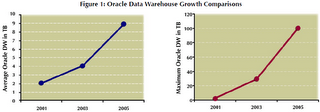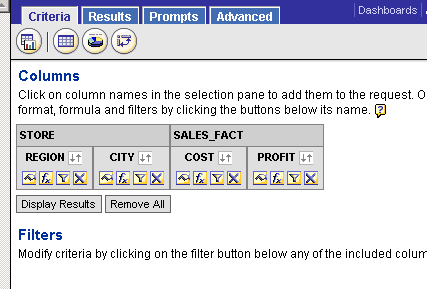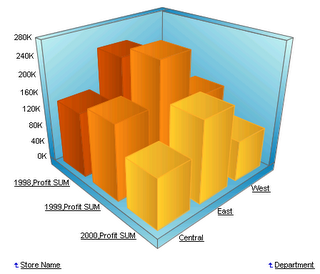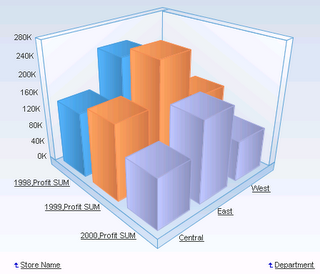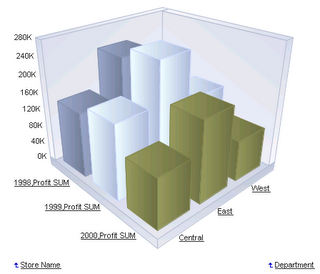ODTUG 2006 opens with Marco Tilli.Well not quite, because although the ODTUG 2006 conference in Washington, DC, really kicked off today, there were presentations and hands-on labs happening over the weekend as well. As a result the whole OWB PM team, along with many other PM groups from Oracle, arrived en-masse in Washington, DC on Friday evening ready for weekend opening of ODTUG 2006. In total, I think we have over 20 Oracle people here at the conference, from Product Managers through to Development Directors.
SaturdayOn Saturday we "
kicked" off (the World Cup is also happening at the same time, just in case you did not know that) with two hands-on labs to give attendees real live experience with the latest 10gR2 release version of Warehouse Builder. We created a very compelling set of exercises around the following topics:
- Data Quality
- Data Modeling
- ETL
- Extensibility (experts)
Each topic lasted and related exercises lasted about 40 minutes. Overall, everyone found the lessons very valuable and we had a lot of great questions and feedback both during and after each session.
SundayThis year I was asked to participate in the panel that reviews all the papers accepted by the conference, to select the top 5 five papers. I must admit I was extremely impressed by the quality and breadth of the subjects covered. One of the papers selected was Lucas Jellema's great paper on "
Pretty JavaServer Faces". The session associated with this was one of the more in-depth presentations that ran on Sunday afternoon. Hopefully, Lucas will publish the paper on the AMIS blog website for download (
http://technology.amis.nl/blog/). The full list of finalists for this year's prize are:
- Andre Beland, The Oracle 10g Release 2 Rules Manager and Expression Filter - Events for business rules
- Lucas Jellema, Pretty Java Server Faces - breakthrough of attractive and productive user interface development
- Alex Nuijten, One Analytic Function can do more than 1000 lines of code
- David Schleis, Polish up Your Web Applications with Ajax
- Maggie Tompkins, Lean Six Sigma Tools and Techniques for Software Process Improvement
Unfortunately I was not able to attend Lucas's session as I was in the Business Intelligence CAB where we presented our BI/DW road map to key, mostly US based, customers and partners. Again, we got some great feedback about feature requirements and feature priorities.
The CAB was followed by the BI Summit Presentation, co-presented by George Lumpkin and Paul Rodwick. George Lumkin, Director of Data Warehouse Product Management, presented on the Oracle database as BI platform and provided great customer success stories such as Amazon.com to show how many customers today are being extremely successful with their BI solutions by leveraging the Oracle database.
George also announced the
release of OWB 10gR2 and Mark Rittman (Oracle ACE and recognized influential blogger) gave a personal overview of this new release and how he is using it to make his customers more successful.
If you have not seen Mark's website, please visit
http://www.rittman.net/. Mark's website and blog contains lots of really useful information about Warehouse Builder and all things Oracle BI.
Just before George's session I attended a session by Donna Richey Winkelman who is Director and Editor in Chief of the ODTUG magazine. This was about "How to get published in the ODTUG technical Journal". A great session about how to write technical articles with links to websites that can provide guidance on how to start and plan your articles. I know I am going to sit down when I get back to Redwood Shores and draft some topics and send them to Donna. I would actively encourage everyone, even if you are have never written a technical article before, to just submit your ideas to Donna for review and if they are accepted the ODTUG Journal team will work with you to help you create, polish and finally publish your ideas as a formal paper.
Monday - Opening KeynotePersonally, I spent most of Saturday and Sunday preparing for today's keynote presentation by Marco Tilli, which was entitled "Who moved your Cheese - The Road Map to Fusion". As part of this presentation we again announced the launch of Warehouse Builder 10g R2 and yours truly was on stage to provide a live demo of the data quality feature. I am pleased to say the demo went very well. This new feature of OWB is extremely powerful and I am sure customers are going to get a lot of value from using it. I had a quite a few people stop me as I left the keynote session to ask more detailed questions and I am sure I will be getting lots of emails asking for more information. What we have created with the data quality feature is a unique and simple value proposition relating to data quality issues - Find it, stop it, cleanse it. All fully automated, fully extensible and integrated as part of the product.
In the afternoon I presented my paper on using data mining to help design OLAP cubes. I won't bore you all again with the details regarding this as I have already written about this last year on the blog. I have refined my ideas and messages since then and extended some of the ideas. In fact I got some new ideas during the session from the Q&A during the presentation. Anyway, I am currently working on creating an Expert to provide the attribute importance feature within OWB. I have other ideas but those I will put in storage and wait for this year’s OpenWorld before unleashing them.
So Monday has ended and tomorrow is definitely OWB today, we have wall-to-wall presentations all day long. Paul Narth, Jean-Pierre Dijcks, Ali el Kortobi and myself are all presenting during the day. In fact I have three presentations tomorrow, one in the morning and two in the afternoon. One of our partners SAIC is also presenting on a very interesting topic - OWB and spatial. I will certainly try to get to that one, although it does clash with Jean-Pierre's paper on OWB's new extensibility features.
For more information about the conference and the list of papers and presenters simply visit the ODTUG website (
http://www.ordtug.com).
One day over and gone, and two still to go and lots to look forward to. This is certainly a unfolding into another great conference by the ODTUG team. One piece of great news, next year ODTUG is going back to the beach with a return to Florida. Start planning your presentations for next year now.
Other InformationFor reference the full list of OWB papers at this years ODTUG 2006 conference are:
- Introduction to Warehouse Builder 10g Release 2
- What exactly is an expert?
- Why use OWB for data modeling (JP)
- How to Extend Warehouse Builder 10g to Include User-Defined Properties, Icons, and Objects
- Climb to the OLAP Summit with Warehouse Builder 10g Release 2
- Reporting against the Warehouse Builder Repository
These can all be download from the collateral link on our OTN Home Page, or by simply clicking
here to go directly to the website. In addition there other related OWB papers being presented. If you are ODTUG member these can be downloaded from the ODTUG website. There are two customer papers:
Using OWB Paris to Implement Production ETL in a Geospatial Data Warehouse by Rob Palmer & Blythe Norris, SAIC This presentation focuses on using OWB Paris and Oracle Spatial to implement production workflows for daily refresh of the Operational Data Store. Topics include design, performance tuning, and lessons learned.
Building an Effective Data Warehousing Architecture Using OWB 10gR2 by Mark Rittman, SolStonePlus OLAP or relational, real-time or batch updates? Do you still need an ODS or staging area? This presentation cuts through the jargon and proposes an effective, layered architecture for Oracle data warehouses based on the new features in OWB 10gR2, Oracle Database 10gR2, and the OLAP and data mining options.
We also have a paper presented by one of our partners:
Lifecycle management (LCM) for Oracle Warehouse Builder and other Oracle Development Environments by Piet Oomkes.IKAN SCM4ALL offers an easy, transparent way to fully automate the software change (of lifecycle) management of your applications through CVS or SUBVERSION and complements the versioning with build and deploy facilities. During this presentation we will cover concepts of LCM for Oracle development and deployment environments (JDeveloper, OWB, Oracle Application Server, Oracle Database) and give a live demo with Oracle OWB, Paris Release.
 Winter Corp has published a white paper titled "Spotlight on Oracle - Key Findings from the 2005 WinterCorp Top Ten Program", which measured the world's largest databases. The report can be downloaded from Oracle.com here.
Winter Corp has published a white paper titled "Spotlight on Oracle - Key Findings from the 2005 WinterCorp Top Ten Program", which measured the world's largest databases. The report can be downloaded from Oracle.com here.
